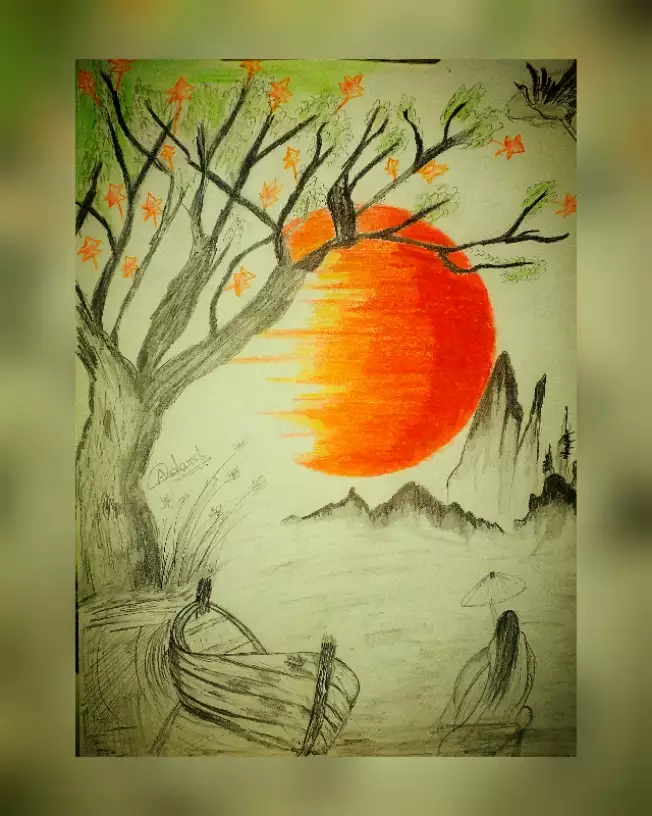Introducing the Most Provocative Trump Art Parts of the Decade
Introducing the Most Provocative Trump Art Parts of the Decade
Blog Article
Starting an Aesthetic Trip Through the Lyrical Interpretations of Nature in Impressionist Landscapes
Each brushstroke, each play of light and darkness, and each shade option in their works talks volumes about the musicians' deep connection to nature and their capability to translate its elegance onto the canvas. As we check out the lyrical interpretations of nature in Stylist landscapes, we are invited to immerse ourselves in a globe where fact and feeling intertwine, offering a glance into the artists' extensive gratitude for the all-natural world.
The Captivating Brushstrokes of Claude Monet
Claude Monet's proficiency of brushstrokes transcends mere strategy, imbuing his landscapes with an ethereal high quality that mesmerizes and mesmerizes viewers - trump art. His cutting-edge use shade and light, integrated with his distinct brushwork, produces a feeling of movement and life within his paints. Monet's popular series of works showing water lilies and his renowned haystacks display his ability to catch the fleeting results of light and atmosphere

Enjoying Light and Darkness With Camille Pissarro
Symbolizing a comparable reverence for the interplay of light and darkness, Camille Pissarro's artistic vision unravels as a harmonious expedition of the all-natural globe's luminescent subtleties. Pissarro, an essential figure in the Impressionist motion, masterfully caught the vibrant partnership between light and darkness in his landscapes. His skilled use color and brushwork enabled him to share the refined changes in light that specify various times of day and seasons.
Pissarro's paintings often include dappled sunshine infiltrating fallen leaves, casting intricate patterns of light and shadow on the planet below. In works such as "Hoar Frost, the Impact of Snow, Pontoise," Pissarro skillfully illustrates the crisp illumination of winter months sunshine juxtaposed with the trendy shadows that define the snowy landscape. By accepting both light and shadow in his structures, Pissarro welcomes visitors to immerse themselves in the natural charm and short-term effects of light on the planet around them.

With Pissarro's works, we are reminded of the transformative power of light and shadow, inviting us to stop and appreciate the fleeting moments of beauty present in the everyday landscapes that surround us.
A Symphony of Color Styles by Edgar Degas
Edgar Degas manages a lively harmony of shades in his skillful artworks, infusing his compositions with a dynamic interplay of shades that mesmerize the audience's gaze. Known primarily for his ballet professional dancers and intimate scenes of Parisian life, Degas adeptly adjusted shades to communicate mood and movement in his paintings. trump art. His use strong, contrasting colors and refined tonal variants produced a sense of depth and vibrancy within his works
Degas' shade combination usually was composed of abundant blues, deep greens, and warm oranges, which he used with certain brushstrokes to record the significance of his subjects. Whether portraying a ballerina mid-performance or a team of friends chatting at a coffee shop, Degas' colors not just illustrated the scene however also stimulated a sense of emotion and energy.
Furthermore, Degas' trial and error with light and darkness added an added layer of complexity to his shade structures, enhancing the total environment of his paintings (trump art). Via his proficient control of shade, Degas developed a visual harmony that remains to reverberate with audiences today
Discovering Nature's Peacefulness With Berthe Morisot
Berthe Morisot's artistic vision supplies a peaceful departure from the vibrant color harmonies of Edgar Degas, as she catches the serenity of nature in her evocative landscapes. Recognized for her fragile brushwork and intimate representations of everyday life, Morisot's landscapes emanate a feeling of peace and consistency.
Morisot's paintings often feature soft, low-key tones that communicate a sense of calmness and peacefulness. Her works, such as "The Cradle" and "Summertime's Day," display her capability to record the subtle appeal of nature in a way that is both reflective and relaxing to the audience.
Unlike some of her Impressionist equivalents that concentrated on dynamic structures and useful link vibrant colors, Morisot chose to produce mild, reflective scenes that welcome the visitor to pause and show. Via her masterful use of light and darkness, Morisot creates a sense of harmony that reverberates with the visitor on a deep emotional level.
The Emotional Landscapes of Vincent Van Gogh
Vincent Van Gogh's landscapes clearly share a deepness of feeling through their dynamic brushwork and expressive usage of color. The Dutch post-impressionist artist is renowned for his capability to capture extreme and raw feelings in his paintings, going beyond typical depictions of nature. Van Gogh's tumultuous personal life, marked by psychological health struggles, substantially influenced his art, infusing his landscapes with a sense of worry, moody, or liveliness.
In works such as "Starry Evening" and "Wheatfield with Crows," Van Gogh's swirling brushstrokes and vivid shade selections stimulate an extensive psychological reaction from viewers. The turbulent skies and perturbed landscapes in his paints mirror his internal chaos and psychological turbulence, inviting viewers to look into the complexities of his psyche.
Van Gogh's one-of-a-kind aesthetic language, defined by overstated perspectives and vibrant use shade, develops landscapes that reverberate with customers on a deeply emotional degree. With his art, Van Gogh invites us to see nature not equally as an exterior fact however as a mirror of our innermost sensations and emotions.
Conclusion
In conclusion, the impressionist landscapes of musicians such as Claude Monet, Camille Pissarro, Edgar Degas, Berthe Morisot, and Vincent Van Gogh use a special and fascinating visual interpretation of nature. Through their usage of brushstrokes, shade, light, and emotion, these artists have actually developed a symphony of images that stimulate a have a peek at this site sense of serenity and appeal in the all-natural globe. Their works proceed to influence and enchant audiences with their lyrical interpretations of the landscapes around us.
Each brushstroke, each play of light and darkness, and each shade choice in their jobs talks volumes concerning the artists' deep connection to nature and their capacity to translate its appeal onto the canvas. His innovative usage of shade and light, integrated with his unique brushwork, develops a feeling of movement and life within his paints. His proficient usage of color and brushwork enabled him to share the refined shifts in light that define various times of day and seasons.

Report this page